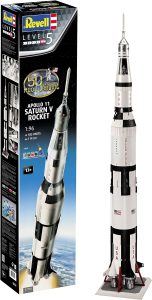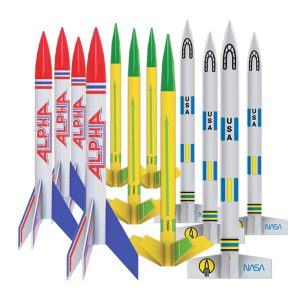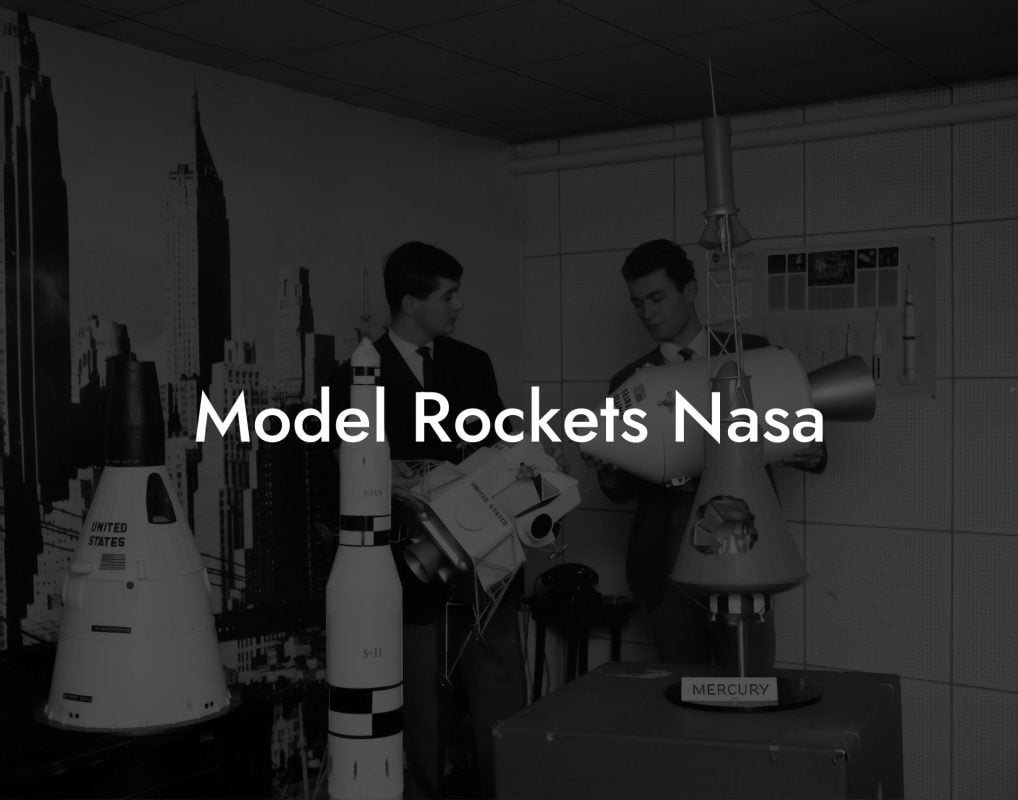Imagine the rush of watching your very own model rocket soar into the sky, leaving a trail of excitement and wonder in its wake. Welcome to the world of model rocketry, where the thrill of exploration meets the joy of creation. Whether you're a seasoned enthusiast or just starting out, this comprehensive guide will blast off your journey into the stratosphere of model rocketry.
Quick Links to Useful Sections
What Are Model Rockets?
Model rockets are scaled-down versions of real rockets, designed to simulate the thrill of space exploration without the hefty price tag. These miniature marvels come in a variety of shapes, sizes, and complexities, catering to different skill levels and interests.
From simple, Estes-style rockets to elaborate, custom-built creations, model rockets offer a unique blend of science, technology, engineering, and mathematics (STEM) principles, creativity, and outdoor adventure.
The Science Behind Model Rockets
Model rockets operate on the same fundamental principles as their full-scale counterparts. The key to successful flight lies in understanding the interplay between thrust, aerodynamics, and gravity.
- Thrust: The force generated by the rocket's engine or motor, propelling it upward.
- Aerodynamics: The study of air resistance and its effects on the rocket's shape, size, and trajectory.
- Gravity: The downward force that opposes the rocket's ascent, influencing its speed and altitude.
By grasping these concepts, you'll be better equipped to design, build, and launch your own model rockets, experimenting with different variables to optimize performance.
Looking For The Best Model Rocket Kits? You'll Love These:
Types of Model Rockets
The world of model rocketry is incredibly diverse, with various categories and subcategories to explore. Here are some of the most popular types:
- Estes-Style Rockets: Classic, mass-produced rockets with pre-assembled components and simple designs.
- Custom-Built Rockets: Unique, handcrafted models that allow for endless creativity and experimentation.
- Scale Models: Accurate replicas of real rockets, often featuring intricate details and realistic paint schemes.
- High-Power Rockets: Large, advanced models that require specialized equipment and expertise.
Each type of model rocket offers a distinct experience, catering to different skill levels, interests, and budgets.
Launching and Recovery
The thrill of launch day is what model rocketry is all about! With proper preparation and safety precautions, you'll be ready to send your creation soaring into the sky.
Pre-Launch Checklist
- Inspect the rocket for damage or defects.
- Ensure proper assembly and alignment of components.
- Check the weather forecast for suitable conditions.
- Choose a safe, open launch site with minimal obstacles.
Recovery Techniques
- Parachute Recovery: A slow, gentle descent using a parachute to slow the rocket's fall.
- Streamer Recovery: A lightweight, compact alternative to parachutes, ideal for smaller rockets.
- Boost Glider Recovery: A specialized technique that converts the rocket into a glider, allowing for a controlled, horizontal landing.
A successful launch and recovery are crucial to the model rocketry experience. By mastering these skills, you'll be able to enjoy the thrill of flight while ensuring the safety of your rocket and those around you.
Resources and community Support: Your Next Steps
As you embark on your model rocketry journey, it's essential to connect with like-minded enthusiasts, learn from their experiences, and stay updated on the latest trends and technologies.
- Online Forums and Communities: Join online platforms, social media groups, and forums dedicated to model rocketry, where you can ask questions, share knowledge, and showcase your projects.
- Local Clubs and Meetups: Look for local model rocketry clubs, meetups, or events in your area, providing opportunities to network, learn, and launch with fellow enthusiasts.
- Tutorials and Guides: Explore online resources, tutorials, and guides that offer step-by-step instructions, tips, and best practices for model rocketry.
- Manufacturer Support: Reach out to model rocket manufacturers, suppliers, and vendors for technical assistance, product information, and expert advice.
By tapping into these resources and community networks, you'll be well on your way to becoming a skilled model rocketeer, with a wealth of knowledge, support, and inspiration at your fingertips.
FAQs: Your Model Rocketry Questions Answered
Here are some frequently asked questions about model rocketry, covering topics from safety and regulations to design and construction:
1. What safety precautions should I take when launching model rockets?
Always follow local regulations, ensure a safe launch site, and wear protective gear, such as safety glasses and a helmet.
2. What is the ideal age for starting model rocketry?
Model rocketry is suitable for people of all ages, from children to adults. However, adult supervision is recommended for younger enthusiasts.
3. How do I choose the right model rocket for my skill level?
Select a rocket that matches your skill level, interests, and budget. Consider factors like complexity, size, and recommended age range.
4. Can I build my own model rocket from scratch?
Yes, you can design and build your own custom model rocket. This approach requires more expertise and creativity, but offers endless possibilities for innovation and experimentation.
5. What are the benefits of joining a model rocketry club or community?
Joining a club or community provides access to knowledge, resources, and networking opportunities, helping you improve your skills, stay motivated, and connect with like-minded enthusiasts.
Looking For The Best Model Rocket Kits? You'll Love These:
Useful Interruption: Dive deeper into the world of Model Rockets with our most popular sections. If there is anything you think is missing or anything you would love for us to write about, just give us a shout.
- Getting Started & Basics With Model Rockets
- Model Rocket Design, Build & Customization
- Model Rocket Propulsion & Engine Technology
- Model Rocket Launch Techniques & Recovery
- Model Rocket Advanced Rocketry & Innovations
- Model Rocket DIY and Customization
- Model Rocket Equipment Reviews & Digital Tools
- Community, Competitions & Education
- Model Rocket Troubleshooting & FAQs
- Model Rocket Bonus/Seasonal & Niche Topics
A group of model rocket enthusiasts gathered at a field for their weekly launch event. Among them was Dave, a seasoned builder known for pushing the limits of hobby rocketry. This time, he had outdone himself.
“Ladies and gentlemen,” Dave announced, dramatically pulling a cloth off his latest creation, “I present to you: The Kraken!”
The crowd gasped. This wasn’t just a model rocket, it was a monster. The thing stood 8 feet tall, had six clustered engines, and was covered in enough duct tape to qualify as a classified aerospace project.
“Dave,” muttered Steve, the cautious safety officer, “Have you, uh… done the math on this?”
“Math?” Dave scoffed. “I built it in my garage at 3 a.m. with parts from eBay. This is an art piece, Steve.”
The countdown began.
5…
4…
3…
2…
1…
The engines ignited with a BOOM, and The Kraken shot up… kind of. It immediately did a violent barrel roll, narrowly missing the spectators before skyrocketing at an angle that could only be described as “legally questionable.”
The crowd collectively ducked as The Kraken flew straight over the adjacent cornfield, where Old Man Jenkins, the grumpiest farmer in town, was minding his business.
KABOOM!
The rocket disappeared behind the barn. A moment later, a flaming piece of Estes igniter wire landed at Steve’s feet. The silence was deafening.
And then, an unmistakable sound echoed across the field.
Jenkins’ shotgun being cocked.
“DAVE!!!” Steve shouted. “RUN.”
And that was the day Dave invented the first-ever biologically powered rocket booster: pure adrenaline.
To this day, nobody knows where The Kraken landed, but legend has it, it still haunts the skies, terrifying unsuspecting drones and low-flying birds.















